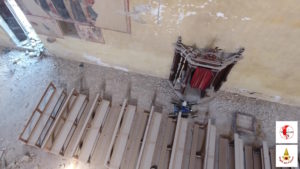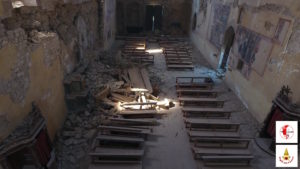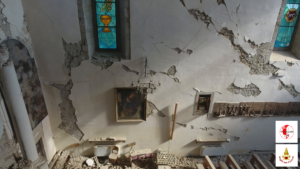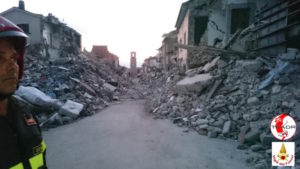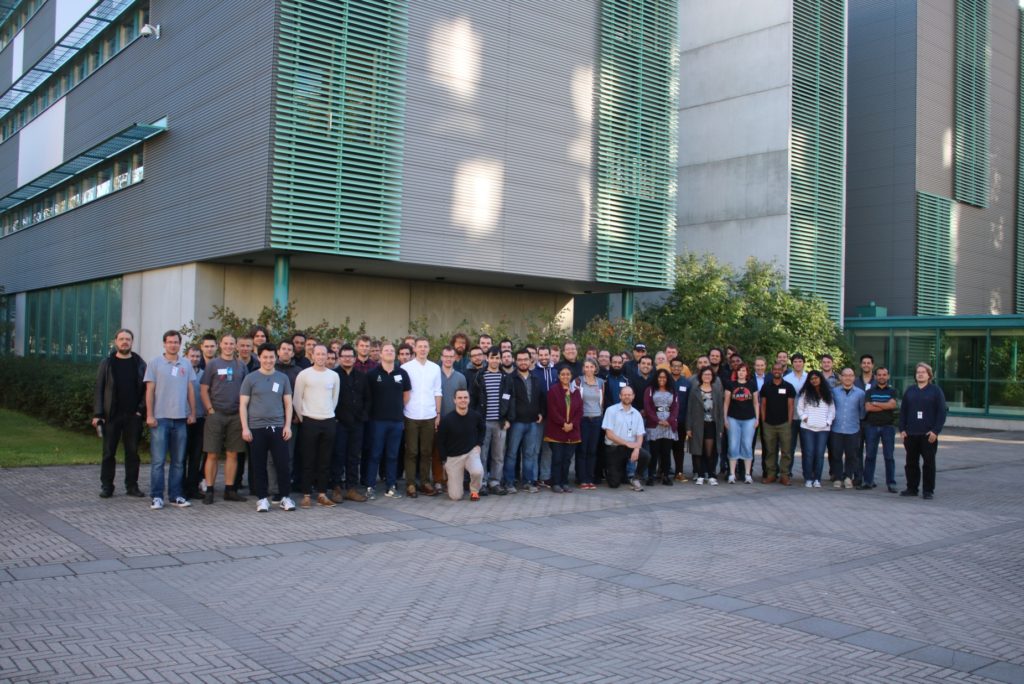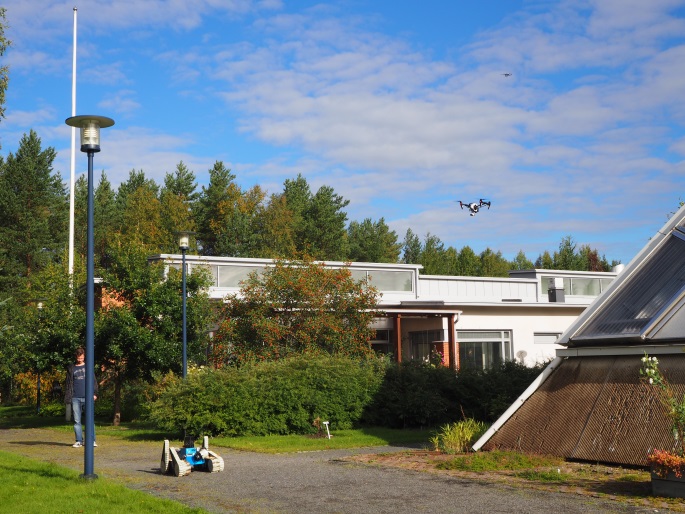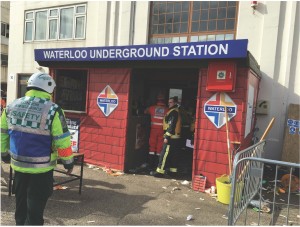On Thursday September 1 2016 a team of the TRADR project deployed two ground robots and three drones in Amatrice, Italy, to assist the post-earthquake response. The team was asked by the Italian Vigili del Fuoco (VVFF), represented by Emanuele Gissi, to provide 3D textured models of two churches: San Francesco and Sant’Agostino, both in a state of partial collapse, in need of shoring to prevent potential further destruction and to preserve the national heritage.
We entered San Francesco with two UGVs (operated by Vlada Kubelka and Mario Gianni, who were supported by Erik Zimmermann and Luigi Freda, respectively), teleoperating them entirely out of line of sight, and partially in collaboration: one UGV provided a view of the other one to enable maneuvering in very constrained space with low connection bandwidth.
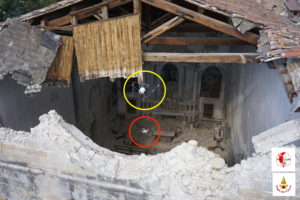
UAV entering the Sant Agostino church (red circle). Two other UAVs provide a view for maneuvering (one in yellow circle, the other providing the image).
Several flights were carried out on the outside and one flight inside of each church. Entering with the drone was a tough challenge, which we managed thanks to a collaboration between three drones operated in parallel: while one drone (piloted by Hartmut Surmann who was supported by Erik Zimmermann) was entering through a hole in the roof the other two (piloted by Kresimir Dilic and Wolfgang Rottner) were providing simultaneous video feed from different angles. The mission fulfilled its goal to collect data for the construction of high quality textured 3D models. Additional great success was the fact that the TRADR team was able to arrive and deploy at the location within 48 hours from receiving the request. The VVFF has expressed high appreciation to the TRADR project for the success of the mission and the smooth operation.
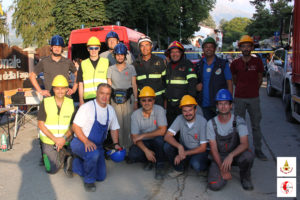
TRADR team in Amatrice (left-to-right): Erik Zimmermann; Wolfgang Rottner; Hartmut Surmann; Ivana Kruijff-Korbayová; Emanuele Gissi;VdF fire fighter; policeman Luigi Ugliano; Mario Gianni; Kneeling: Krešimir Dilic; Václav Hlaváč; Luigi Freda; Valsamis Ntouskos; Vladimír Kubelka.
Browsable versions of the 3D models of the interior and exterior of both San Francesco and Sant’Agostino churches generated from the data collected during the deployment in Amatrice can be accessed here.
A short paper about the deployment has been published at the International Symposium on Safety, Security and Rescue Robotics, EPFL, Lausanne, Switzerland, Oct 23-27 2016.
TRADR media announcements about the Amatrice deployment:
News/Articles in specialized media:
- Article in computer-automation, Sept 9 2016 (in German)
- Article on RoboHub, Sept 8 2016 (in English)
- Unmanned Systems News, Sept 6 2016 (in English)
- Article in idw-online, Sept 5 2016 (in German)
General news coverage, see for example:
- Rome reports report and video, Sep 6 2016 (in English)
- Original TRADR video on Corriere TV, Sep 6 2016
- Repubblica TV commentary, interview and original TRADR video footage based on R.it blog post by Marco Billeci, Sep 5 2016 (in Italian/English)
- EU news report and video, Sep 2 2016 (in Italian/English)
- NewsBiella report with photos, Sep 2 2016 (in Italian)
- Czech TV news, Aug 31 2016 (in Czech)
The news of deployment was reported by Reuters, although without reference to the TRADR project. Many other media took this announcement and video over. In Germnay, for example: Frankfurter Allgemeine, Sueddeutsche Zeitung, n24, Die Zeit, Stern, MSN.
See more links to press coverage here.
